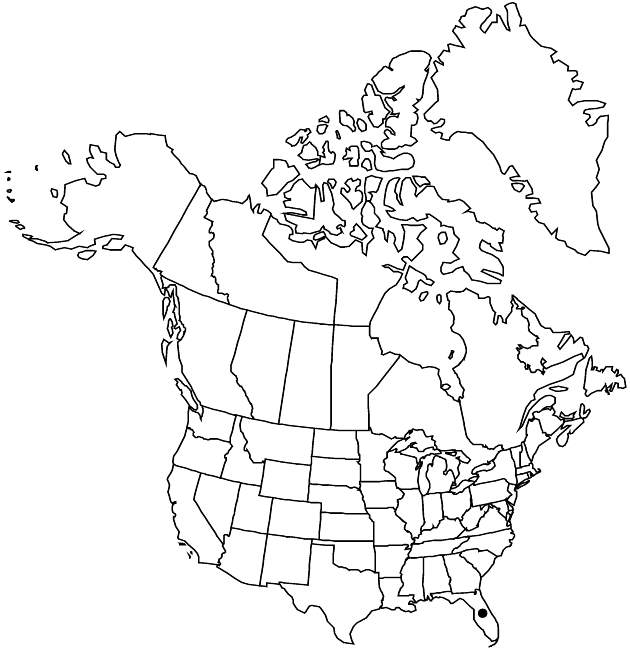Ageratum maritimum
in A. von Humboldt et al., Nov. Gen. Sp. 4(fol.): 117. 1818.
4(qto.) 150. 1820.
Annuals or perennials, 10–50 cm (semisucculent, rhizomatous, forming colonies). Stems decumbent to straggling or creeping (rooting at nodes), glabrous but for puberulous-pilose nodes. Leaf-blades deltate-ovate to oblong, mostly 0.8–4 × 0.5–3 cm, (fleshy) margins toothed, faces glabrous or glabrate. Peduncles glabrous or glabrate. Involucres ca. 3 × 3–4 mm. Phyllaries elliptic-lanceolate, glabrous or glabrate, tips abruptly tapered to nearly obtuse. Corollas lavender or blue to white. Cypselae glabrous; pappi usually blunt coronas ca. 0.1 mm, rarely of separate scales.
Phenology: Flowering year round.
Habitat: Beach sand and nearby thickets, coral soils, salt marshes, hammocks, roadsides
Elevation: 0–10 m
Distribution

Fla., Mexico (Quintana Roo), West Indies (Cuba), West Indies (Hispaniola), Central America (Belize)
Discussion
Plants from Florida (Ageratum littorale, the type from Florida) are described here. Plants of the West Indies and Mexico (broadening the species concept to A. maritimum, the type from Cuba) have various elaborations of vestiture and a more conspicuous pappus–coronas with even to laciniate margins or rings of nearly separate scales mostly 0.2–1.5 mm. In addition to the distinctive relatively small, glabrous or glabrate leaves, plants of A. maritimum are characterized by heads in clusters, usually held well beyond the leaves.
Selected References
None.
Lower Taxa
"fine" is not a number.